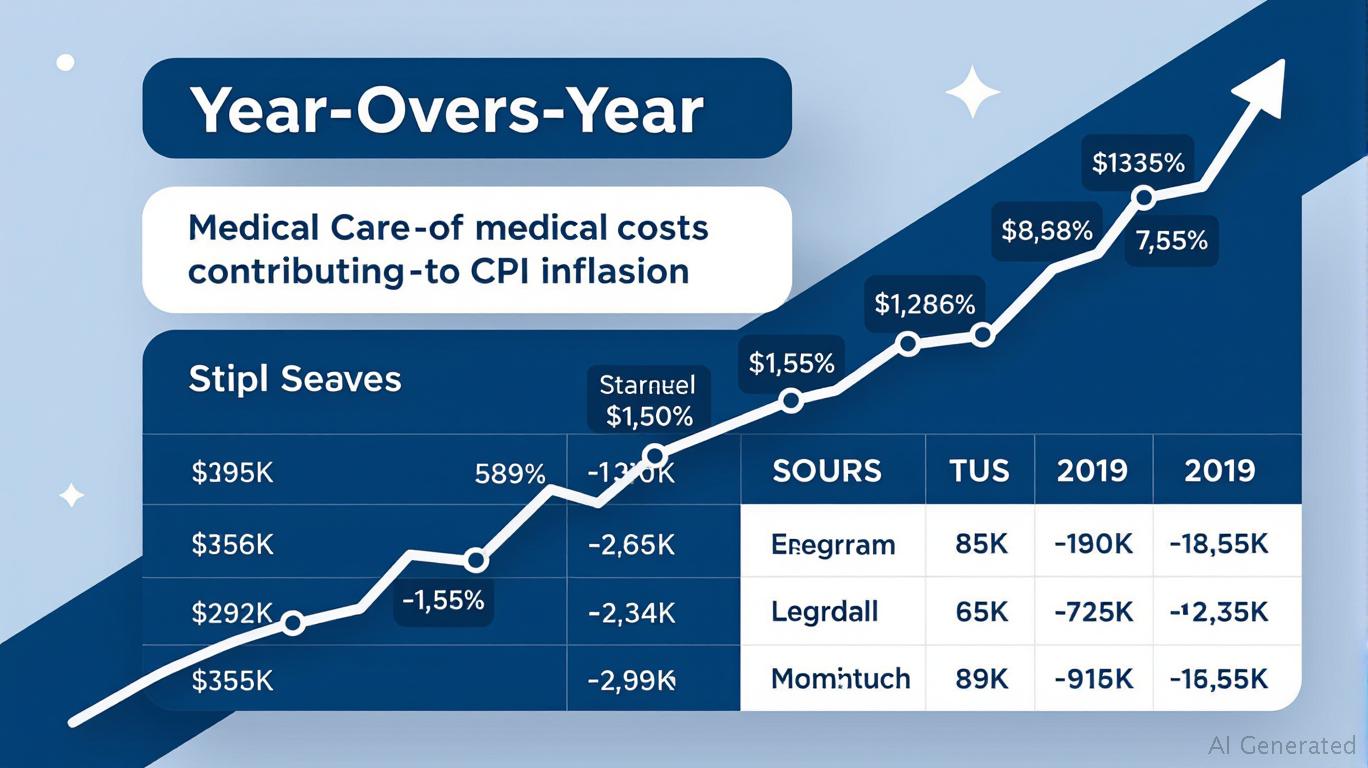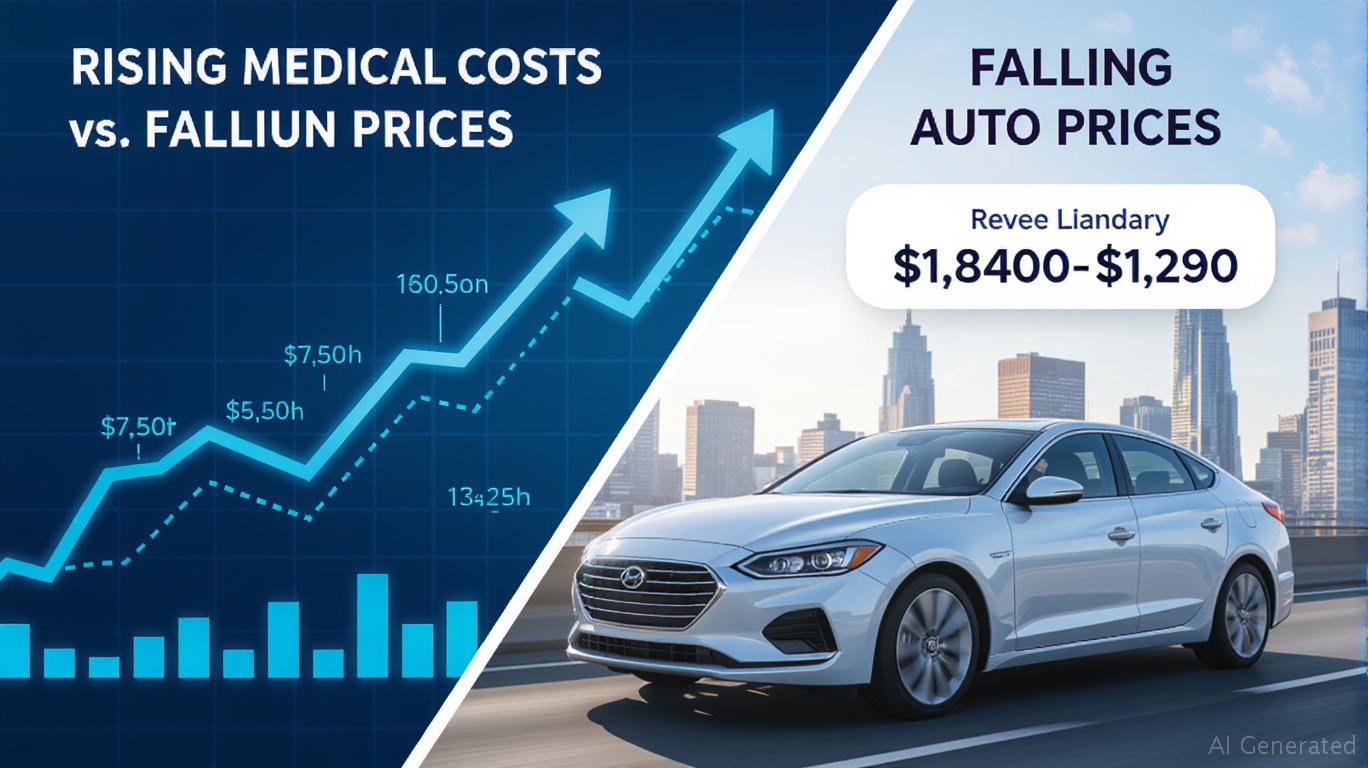The June 2025 CPI report has delivered a stark message: tariff-driven inflation is here, reshaping the economic landscape and creating both risks and opportunities for investors. With the annual inflation rate climbing to 2.6% and core inflation hitting 3.0%, sectors exposed to tariffs are now front and center in the inflation narrative. Meanwhile, the Federal Reserve faces a pivotal decision—hold rates steady or cut to offset slowing growth. This article dissects the inflation trends, identifies sectors positioned to thrive, and maps out how investors can navigate this shifting terrain.
The Tariff Effect: Where Inflation is Rising—and Why
The June CPI data highlights a sectoral divergence driven by trade policies. While shelter costs (a third of the CPI basket) have softened, tariffs are fueling price hikes in core goods and services, creating a two-tiered inflation environment.
1. Healthcare & Medical Services: A Steady Inflation Hotspot
The medical care index rose 0.3% in June, with hospital services up 0.4% and prescription drugs increasing 0.6%. Tariffs on imported medical equipment and pharmaceuticals are compounding pressures, allowing providers to pass costs to consumers.

Investment Play:
– Stocks to Watch: Companies with pricing power in healthcare, such as Johnson & Johnson (JNJ) or UnitedHealth Group (UNH).
– ETF Opportunity: The Health Care Select Sector SPDR Fund (XLV), which holds diversified exposure to the sector.
2. Hospitality & Travel: The Services Sector’s New Inflation Engine
Hotels and airfares—critical components of the services sector—are seeing sustained price increases. While airline fares dipped in May, broader hospitality costs (e.g., lodging) rose 0.2% in June. Tariffs on imported furnishings and linen supplies are squeezing margins, prompting operators to raise prices.
Investment Play:
– Hotels: Marriott International (MAR) and Hilton (HLT), which can capitalize on rising demand post-pandemic.
– Airline Plays: American Airlines (AAL) and Delta (DAL), though volatility remains due to oil prices and labor costs.
3. Consumer Staples: A Mixed Picture
While tariffs on food and household goods have pushed prices up—food at home rose 2.2% annually—automobile prices are bucking the trend, falling due to weak demand. This creates a bifurcated opportunity:
Winners: Companies insulated from auto declines, such as Procter & Gamble (PG) (household goods) or Kroger (KR) (groceries). Avoid: Auto manufacturers like General Motors (GM), where pricing power is constrained by oversupply. The Fed’s Dilemma: Rate Cut or Hold?
The June CPI data has intensified the debate over Fed policy. Markets now price a 60% chance of a September rate cut, up from 7% for July. But the Fed faces a Goldilocks paradox:
Inflation Risks: Core inflation at 3.0% exceeds the 2% target, but shelter costs are moderating. Growth Concerns: Auto sector softness and lingering trade war effects could slow GDP.
Investment Implications:
– If the Fed Cuts Rates: Equities rally, with rate-sensitive sectors like real estate (e.g., iShares U.S. Real Estate ETF (IYR)) gaining traction.
– If the Fed Waits: Defensive plays—utilities, healthcare—become safer bets.
Positioning for the Tariff-Inflation Cycle
Investors should adopt a sector-agnostic, data-driven strategy, focusing on companies with:
1. Pricing Power: Ability to pass tariff costs to consumers (e.g., healthcare, luxury goods).
2. Domestic Supply Chains: Less exposed to import tariffs (e.g., U.S.-based manufacturers).
3. Dividend Resilience: Utilities and REITs offer stability in volatile environments.
Final Take: Ride the Inflation Wave—With Caution
The June CPI report underscores that tariffs are now a structural inflation driver, not a temporary blip. While sectors like healthcare and hospitality stand to benefit, investors must balance this against the Fed’s uncertain path. A September rate cut could boost equities broadly, but a hawkish stance could pressure markets.
Actionable Advice:
– Buy defensive staples (PG, KR) and healthcare leaders (JNJ).
– Avoid auto manufacturers and energy plays tied to oil volatility.
– Stay nimble: Monitor the August CPI release and Fed commentary for clues on policy direction.
The inflation era is here—and smart investors will profit by aligning with the sectors and policies shaping it.

